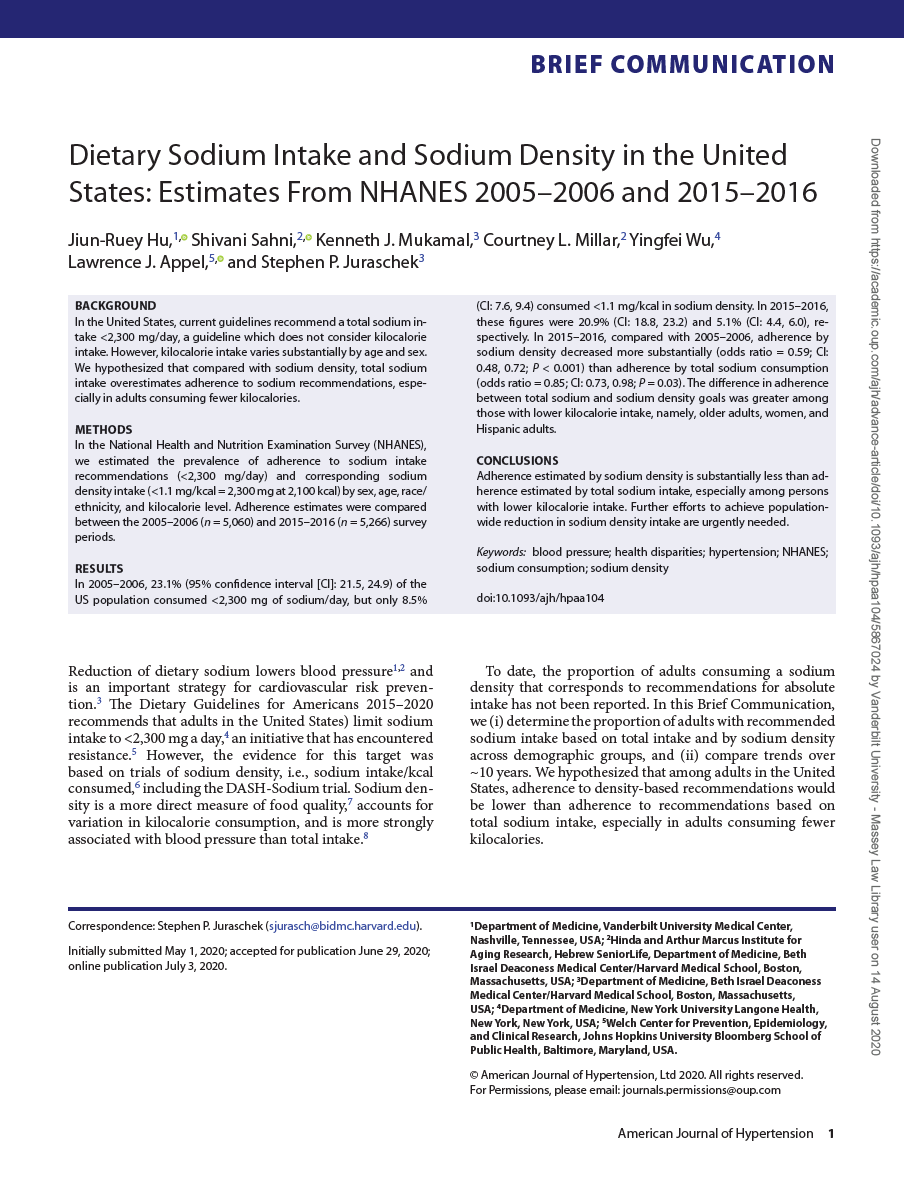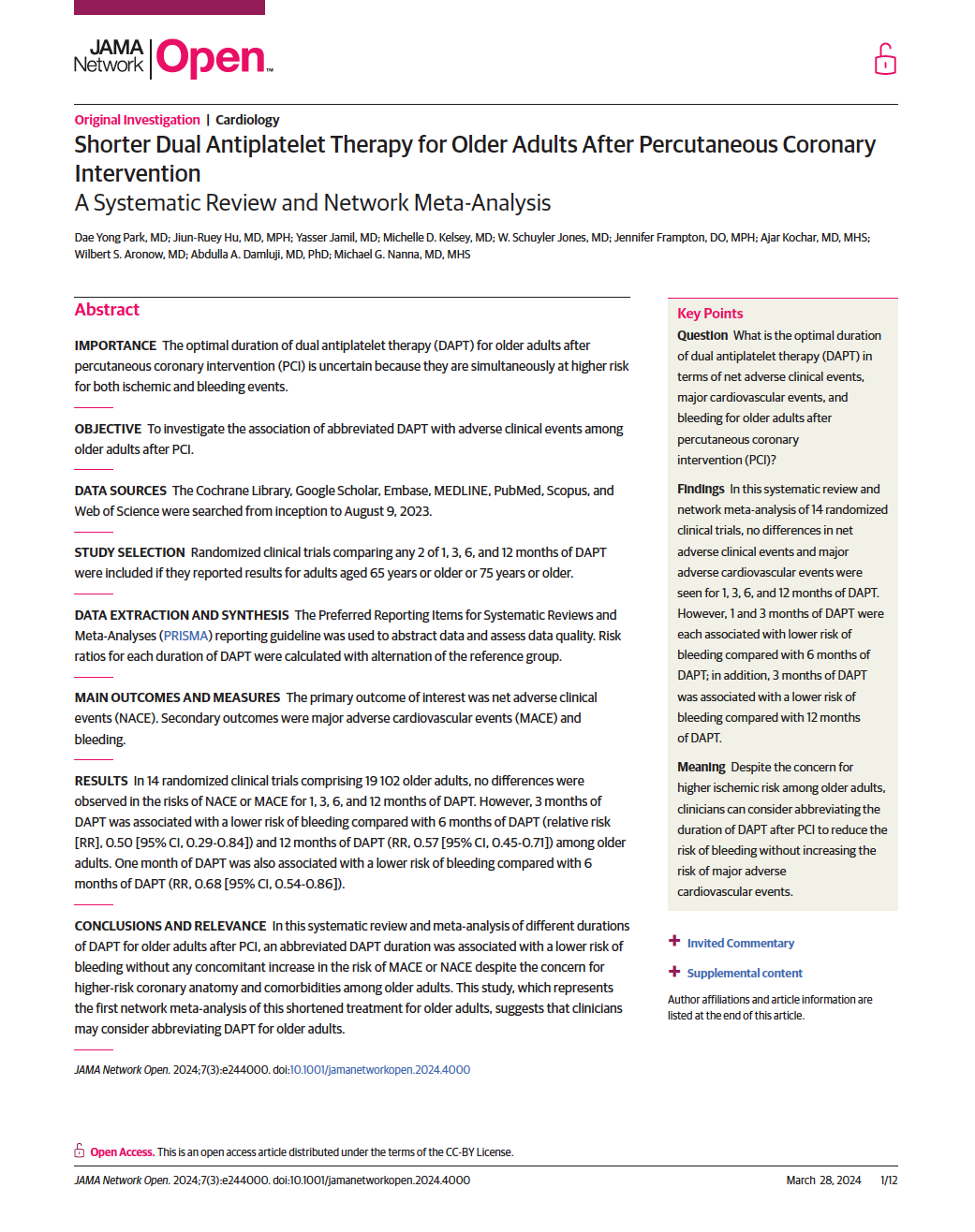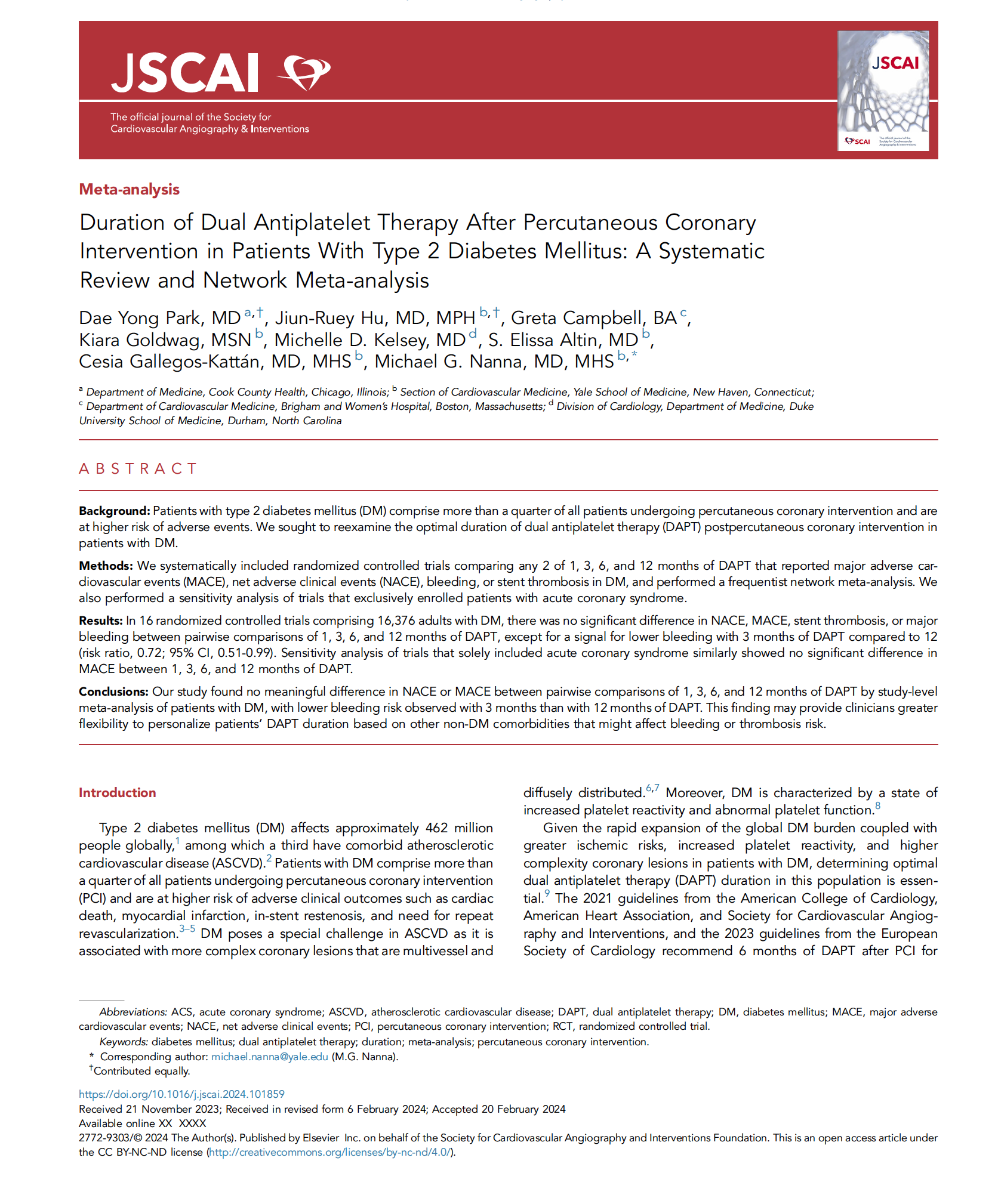📝 Abstract
Background: In the United States, current guidelines recommend a total sodium intake <2,300 mg/day, a guideline which does not consider kilocalorie intake. However, kilocalorie intake varies substantially by age and sex. We hypothesized that compared with sodium density, total sodium intake overestimates adherence to sodium recommendations, especially in adults consuming fewer kilocalories.
Methods: In the National Health and Nutrition Examination Survey (NHANES), we estimated the prevalence of adherence to sodium intake recommendations (<2,300 mg/day) and corresponding sodium density intake (<1.1 mg/kcal = 2,300 mg at 2,100 kcal) by sex, age, race/ethnicity, and kilocalorie level. Adherence estimates were compared between the 2005-2006 (n = 5,060) and 2015-2016 (n = 5,266) survey periods.
Results: In 2005-2006, 23.1% (95% confidence interval [CI]: 21.5, 24.9) of the US population consumed <2,300 mg of sodium/day, but only 8.5% (CI: 7.6, 9.4) consumed <1.1 mg/kcal in sodium density. In 2015-2016, these figures were 20.9% (CI: 18.8, 23.2) and 5.1% (CI: 4.4, 6.0), respectively. In 2015-2016, compared with 2005-2006, adherence by sodium density decreased more substantially (odds ratio = 0.59; CI: 0.48, 0.72; P < 0.001) than adherence by total sodium consumption (odds ratio = 0.85; CI: 0.73, 0.98; P = 0.03). The difference in adherence between total sodium and sodium density goals was greater among those with lower kilocalorie intake, namely, older adults, women, and Hispanic adults.
Conclusions: Adherence estimated by sodium density is substantially less than adherence estimated by total sodium intake, especially among persons with lower kilocalorie intake. Further efforts to achieve population-wide reduction in sodium density intake are urgently needed.


